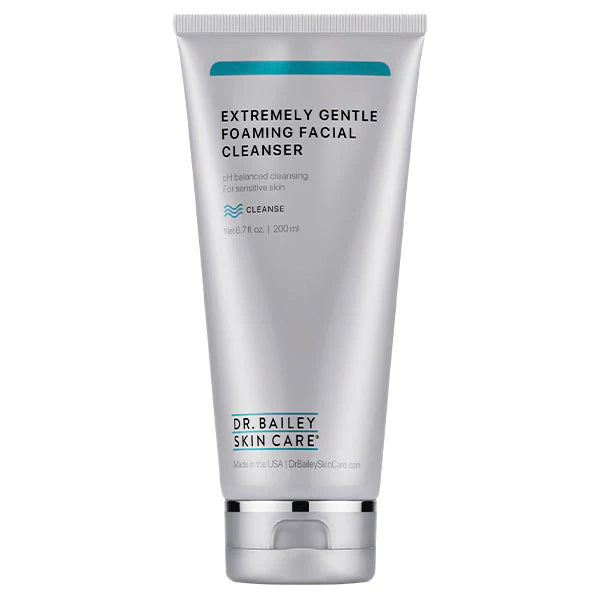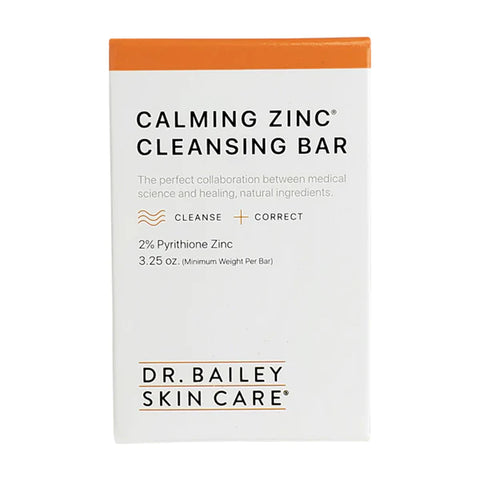Understanding Rosacea - Symptoms, Types, Triggers & Treatment

Understanding rosacea and its symptoms, types, triggers and treatment is important if you are one of the many millions of people blessed with the condition. The good news is that it is possible to have rosacea AND have an attractive and healthy complexion. You just need to understand the unique needs and triggers of this otherwise frustrating skin problem.
Understanding rosacea
Definition of rosacea:
Rosacea is a facial rash that starts in adulthood and is a common cause of ‘adult acne’. The rash typically manifests as facial redness, pimples, skin sensitivity, visible facial capillaries of various sizes, and a tendency for facial redness and flushing. Anybody can develop rosacea, but Caucasian people are most likely to be affected, especially those with Celtic or Northern European ancestry. Rosacea, however, is not rare in people with skin of color.
Rosacea is a chronic condition that continues to confound scientists. While we don’t know the cause of, or have a cure for, rosacea, we do have treatments and advice to help control the symptoms.
Understanding the symptoms of rosacea
If you think you suffer from rosacea, there are three main skin symptoms you may notice. You don’t have to suffer from all three of these to qualify for the diagnosis of rosacea.
The 3 skin symptoms of rosacea include:
1. Facial pimples

2. 'Broken' facial capillaries that are prone to flush and blush

3. Enlargement of solitary oil glands called sebaceous hyperplasia papules (not always accompanied by increased skin oil).

The different types of rosacea
There are four types of rosacea (Type 1, Type 2, Rhinophyma and Ocular Rosacea). From the standpoint of avoiding triggers and improving your rosacea with your skin care routine, the four types or rosacea essentially distill down to two basic complexion types:
- Rosacea with highly sensitive skin.
- Rosacea with fairly tolerant skin.
You need to know which of these two complexion types describes your skin in order to find the right skin care products to fix the redness, pustules and flushing of rosacea without triggering it!
Understanding the difference between Type 1 and Type 2 Rosacea
Definition:
Erythematotelangiectatic rosacea (referred to as rosacea subtype 1) is typically associated with exquisitely sensitive skin.
Papulopustular rosacea (referred to as rosacea subtype 2) is typically associated with more tolerant skin and less skin sensitivity.
There can be overlap between the two rosacea types, but try to decide which of these your complexion most closely resembles because their treatment needs may differ.
How do you know which type of rosacea you have?

4 skin signs of type 1 erythematotelangiectatic rosacea:
- The skin is very sensitive and easily irritated by most skin care products, temperature extremes, exfoliation, sun exposure, volatile chemical fumes etc.
- Broken capillaries are often visible as a fine network and skin flushing may sting.
- The skin is finely textured with scale and roughness to the touch. The skin may feel 'filmy'.
- The red pimples of rosacea are often small.
These changes may be dramatic or subtle. They are most apparent on the apples of the cheeks, mid-forehead, nose and chin.

4 skin signs of type 2 papulopustular rosacea
- Skin is often oily with large pores, a 'filmy' feel, and a red thick and swollen appearance.
- Pimples are often large and very red.
- Broken capillaries are often large and the flushing may not sting.
- Skin is often less sensitive and may be very tolerant when not inflamed.

Because skin sensitivity differs in these two rosacea skin types, it’s important to decide if you have mostly type 1 or 2 rosacea before you try any new products. - Dermatologist Dr. Cynthia Bailey
Pro-tip: People who have rosacea often have facial seborrheic dermatitis (aka dandruff).
Both rosacea and seborrhea cause sensitive red facial skin, and both respond to some of the same treatments. The skin care routine in my Rosacea Therapy Kit addresses both conditions. Stubborn flare-ups of either of these two conditions may call for different approaches.
Is seborrheic dermatitis a symptom of rosacea?

Seborrhea (facial dandruff) is a different skin problem than rosacea but they often coexist.
Rosacea often involves the “apples” of the cheeks, mid forehead, chin and nose.
Seborrheic dermatitis of the face often involves the furrows of the face and hairy areas like the brows and chin. It causes redness and a flakey scale that people often mistake for 'dry skin'. Facial seborrhea may be accompanied by scalp dandruff.

If you think you may also have seborrheic dermatitis on your face, then it's important to use products that treat both conditions.
Understanding the best skin care treatment to control rosacea and avoid triggers?
Soothing skin care products are the best for rosacea. You’ll want to focus on using ingredients that calm inflammation instead of harsh acne products because rosacea is an inflammatory skin problem - not a type of acne.
It’s important to understand that most rosacea-prone complexions have abnormally-sensitive facial skin due to compromised skin barrier strength. This means that any irritating products or treatments (such as anti-aging or acne treatments) may not be tolerated. - Dr. Bailey
That said, once your rosacea is in remission, it is possible to exfoliate and/or use age-fighting products if you are careful. I explain how to do this later in the article.

Create a holistic Complete Skin Care Routine to control rosacea
Use only compatible rosacea-friendly products for each of the 4 essential steps of skin care:
- CLEANSE
- CORRECT
- HYDRATE
- PROTECT
You can't skip a step when you have rosacea! Nope, you can't; your damaged skin barrier won't heal without a good moisturizer, your rosacea will flare up with UV ray exposure, cleansing your skin removes the buildup of skin microbes that can exacerbate rosacea, and the correct step is where you are trying to calm rosacea. Rosacea control requires a holistic rosacea-friendly skin care routine.
I've created a skin care kit for my patients that addresses all the key skin care steps with my Rosacea Therapy Kit. For over 30 years, I've given my patients hand-written instructions for their skin care routine. I finally realized that this was always what I was writing down for my rosacea patients. We fit in their prescription topical medicines after the Green Tea Cream or alternate an Rx cleanser with these products, but this has been the foundation routine. The kit gives you what I know to be the best Complete Rosacea Skin Care Routine to control rosacea.
Tips for how to select the right products for rosacea skin care to avoid triggers
To help you understand how to build a rosacea skin care routine, here is how I do it:
CLEANSE your rosacea-prone complexion carefully. Cleansers can be irritating and trigger rosacea flare-ups. Use cleansers that are non-irritating and not overly drying unless you have extremely oily papulopustular rosacea. Avoid scrubbing or exfoliation unless your rosacea inflammation is entirely controlled and your skin tolerates it.
My tips for selecting the best cleansers for rosacea are as follows:
- I avoid harsh cleansers or cleansers with acid ingredients such as AHA cleansers, except for only the oiliest papulopustular rosacea.
-
The sensitive skin barrier of rosacea does best with a pH balanced type of cleanser called a synthetic detergent cleanser (Syndet). My top choice is Extremely Gentle Foaming Facial Cleanser (which is what I use) or VaniCream Cleansing Bar.

- I alternate the pH balanced cleanser with a cleanser that contains ingredients aimed at the facial microbe population that impacts rosacea.
My top choices include. 1) Calming Zinc Bar for rosacea (fortified with 2% pyrithione zinc), and 2) prescription sodium sulfacetamide/sulfur cleansers. Note that both of these will also address seborrhea.

- Oily skin suffering from papulopustular rosacea may respond nicely to benzoyl peroxide foaming cleansers such as my Foaming Benzoyl Peroxide Acne Treatment Cleanser. This can be used when skin is not sensitive in place of the pH balanced cleanser.
- I generally avoid facial toners for all but the oiliest rosacea complexions. If I do use them I stick with alcohol free/gentle products only such as my Naturally Hydrating Pore Minimizing Rose Tone.
CORRECT rosacea complexion problems by using products that help reduce inflammation and capillary blood flow and flushing, both of which drive the symptoms of rosacea. Medicines that reduce skin microbes can also treat rosacea.
The single best product for rosacea skin care is high concentration green tea ECGC polyphenol antioxidants combined with caffeine. Every rosacea patient in my practice uses Green Tea Antioxidant Skin Therapy Cream fortified with resveratrol because it works so well.
The Green Tea Antioxidant Skin Therapy helps to calm my red rosacea prone complexion like nothing else. MKR
Why is a pharmaceutical-grade, stable and high concentration green tea product so helpful to reduce the symptoms of rosacea?
Studies have shown that skin suffering from rosacea is depleted of antioxidants. This product contains highly concentrated levels of the active and soothing green tea antioxidants. When combined with caffeine the green tea polyphenol antioxidants are even more anti-inflammatory and the caffeine has the potential to help vasoconstrict facial capillaries.
Facial dandruff often occurs with rosacea and needs to be treated too. The Calming Zinc Bar Soap and Green Tea Antioxidant Skin Therapy are the two most useful daily products to control facial seborrhea. They are available together in my Redness Relief Kit.
I have suffered from seborrheic dermatitis & rosacea for more than 20 years. After using these products for one week, my dry scales are gone & the redness from my rosacea is gone. No more itchy and stinging facial skin. Also, slowly but surely the bumps associated with my rosacea are disappearing. I'm sold & will be a repeat customer. Tamara V
Papulopustular rosacea with clogged pores may benefit from a salicylic acid alcohol-free product applied where the pores are clogged.
Medicated topical antimicrobial treatments for rosacea
Benzoyl peroxide (such as my alcohol-free Benzoyl Peroxide Acne Treatment Cream) has broad antibacterial properties and helps to break up pore clogging debris in papulopustular rosacea. It can be applied once or twice a day after the Green Tea Antioxidant Skin Therapy. Benzoyl peroxide will not be tolerated by most people with the sensitive skin/erythematotelangiectatic type of rosacea.
Metronidazole cream or gel (Metrogel) and sodium sulfacetamide/ sulfur lotion or foam are both antibiotics. Soolantra is an anti-parasitic medicine that treats the Demodex mite overgrowth commonly seen in rosacea. It is expensive and so I have also used generic permethrin cream to do this though it is an 'off label' use of the prescription medication.
Other rosacea skin care prescription medicines include Azelaic acid (such as Finacia) and Brimonidine (Mirvaso). My patients and I have not found these helpful and usually stick with the prescriptions above.
I typically have patients apply medicated treatments after the Green Tea Antioxidant Therapy product but before their moisturizers. Use of any prescription medicine must be guided by the treating physician.
HYDRATE your skin to help heal the weakened skin barrier that creates skin sensitivity from rosacea. Your moisturizer should prevent transepidermal water loss (TEWL), replenish skin barrier components such as ceramides, phospholipids and squalane, and contain humectants such as glycerin and hyaluronic acid. With type 2 rosacea especially, parts of your face may be drier than others. If so, apply more moisturizer on the dry areas and less on the oil areas.
Tips to choose the best face moisturizing cream to calm the symptoms of rosacea
Avoid taunting ingredients such as AHAs, BHAs, vitamin C and even niacinamide. I have seen all of these cause redness and irritation in my rosacea patients.
Good ingredients to look for are hypoallergenic oils such as jojoba, glycerin, hyaluronic acid, squalane, dimethicone and ceramides. I prefer that people with rosacea keep product ingredients simple in their moisturizers to lower the risk of accidentally using a product with something that irritates their rosacea.
My rosacea patients do the really well with my Daily Moisturizing Face Cream for Dry Skin. It is lightweight for even the most oily papulopustular type 2 rosacea yet barrier replenishing enough for type 1 rosacea because it contains ceramides and squalane.
After years of using high-end French and German skincare products, I finally found the best moisturizer of all and also for half the cost. It's light but highly effective and with zero fragrance. Thanks so much, Dr. Bailey. Frances
A botanical natural moisturizer option is my Natural Face, Hand and Body Lotion.
PROTECT rosacea-prone skin from UV light because UV rays have been proven to trigger rosacea, especially the erythematotelangiectatic type. Mineral sunscreen is tolerated the best.

Avoid any white cast by selecting a tinted product that contains iron oxide. Yes, this is important; iron oxide helps block some of the visible and digital screen light that also damages skin. The tinting technology in my Sheer Strength Pure Physical Matte Tinted Sunscreen blends into all skin tones to become invisible (it does not look like you are wearing a tinted product), works really well on a man's textured facial hair baring skin, and the matte base absorbs oil on the sebaceous complexions of papulopustular rosacea. It's great under a woman's makeup and the tinting softens complexion flaws. People with rosacea need facial sunscreen every day and this is the one!
Avoid chemical sunscreen ingredients that can irritate sensitive rosacea-prone skin. I also recommend avoiding sunscreens with 'anti-aging' ingredients because they are usually irritating.
What’s the best makeup to use if you have rosacea?

Pure mineral makeup powder is tolerated best due to its ingredient simplicity. Makeup, if you use it, goes on top of your other skin care products. Mineral makeup also provides additional sun protection when applied on top of sunscreen.
My Pressed and Baked Mineral Powders and Loose Mineral Makeup Blush are elegant, natural and ideal for rosacea-prone skin, plus, they provide long lasting coverage with a fine natural finish. My mineral makeup is well-priced and high quality.

What skin care products can trigger rosacea and make it worse?
Lots! Yep, with rosacea, you need to be ultra-cautious with your skin care choices.
Common categories of rosacea-unfriendly products include:
- acne products,
- anti-aging products,
- "natural" products stuffed with high concentrations of essential oils - like citrus, and
- chemical sunscreens.
Here's the low down with rosacea skin care triggers:
- Acne products with salicylic acid, benzoyl peroxide, glycolic acid, ethyl alcohol or acetone can be overly drying and irritating to sensitive skin.
- Anti-aging products with AHAs (also called alpha hydroxyl acids including glycolic acid and lactic acid among others), BHAs (most notably salicylic acid), vitamin C (which needs to have a very acid pH) and retinoids (retinol and prescription tretinoin) can all be irritating. Of these, the retinoids are the ones I can often coax a rosacea complexion to tolerate once I have it entirely controlled with my Rosacea Therapy Kit routine.
- Botanical ingredients such as tea tree, camphor, citrus and rosemary oil can be irritating, especially in higher concentrations.
Having rosacea doesn’t mean you can’t ever use these types of products, but it means that you have to be cautious, patient and ‘sneak up’ on your skin when it is entirely controlled. This means:
- Testing them on a small part of your skin for several weeks
- Trying them only when your rosacea is controlled
- Choosing lower strengths and/or starting with less frequent applications.
If your rosacea flares back up for any reason, you have to stop using anything even slightly irritating, and go back to a gentle, rosacea-healing skin care routine until your skin calms down.
IF you think your skin will tolerate it, consider re-trying a potentially irritating product, but using it less frequently and on the less sensitive parts of your face. Remember, a serious flare up of rosacea can leave lasting marks on your skin.
What’s the best way to begin a rosacea skin care treatment routine?
- Think about what products and procedures you have tried before. What have you tolerated or not tolerated? Use this history as a guide.
- When in doubt, start cautiously with non-irritating products and treat only a small area of your rosacea prone skin to see how your skin responds.
The bottom line with treating your rosacea-prone complexion and understanding the symptoms, types and triggers:
Whether your rosacea is active or in remission, your skin is still sensitive and has a more porous barrier strength than normal skin. That’s why you need carefully-selected skin care products and a holistic rosacea-friendly skin care routine to prevent rosacea flare-ups. And, it's why I created my Rosacea Therapy Kit - I take the guesswork out of a rosacea-healing skin care routine.
Is it safe to use cortisone treatment creams on your face to “treat” rosacea?
Cortisone creams should only be used under the supervision of a qualified dermatologist. Even then, it’s still not entirely “safe,” as cortisones can cause lasting side effects on your skin.
In my dermatology practice, I only use non-halogenated topical cortisone steroid creams as a last resort for short-term control of facial inflammation (such as over-the-counter hydrocortisone cream).
It’s important to note that halogenated steroids will aggravate rosacea. Steroid creams can also thin your skin and damage your eyes. Your dermatologist will know what this means and should be the one to prescribe and supervise any cortisone use on your face.
Are you overwhelmed with your complexion and the intricacies of rosacea-prone skin?
Try my Rosacea Therapy Kit for a good skin care routine that's been proven successful by my many thousands of rosacea patients. Just start with the Calming Zinc once a day alternating with the Extremely Gentle Cleanser. Apply the Green Tea and Daily Face Cream twice a day. Apply the Sunscreen during the day. See how it goes. You can add more later once you see how your complexion responds. This is what I use on my own tricky rosacea-prone face.





